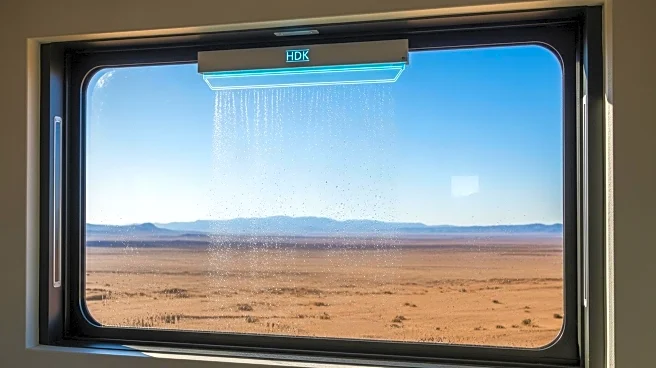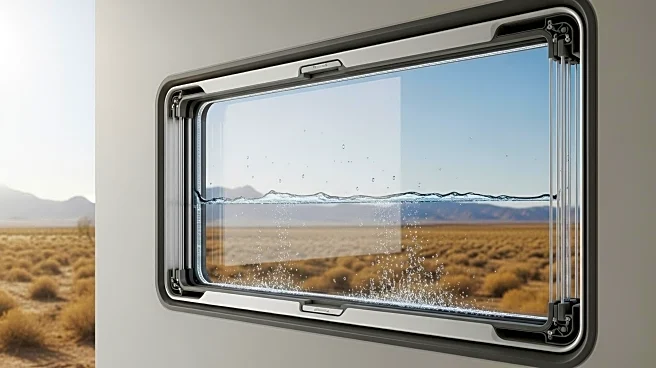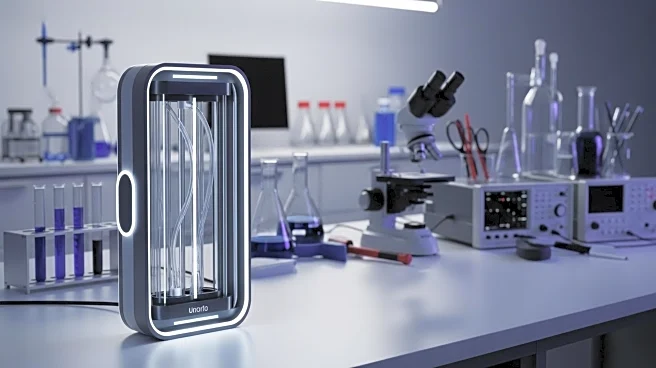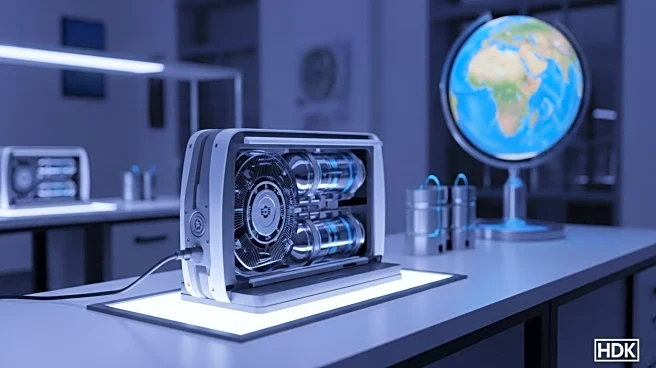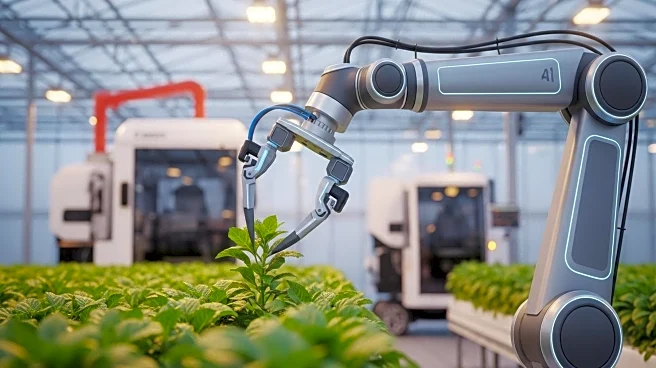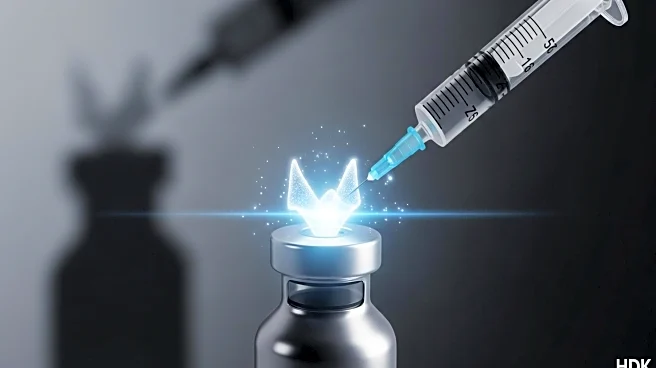What's Happening?
An international team of engineers has developed a groundbreaking technology that can extract drinking water from the air, even in extremely dry climates. This innovation was showcased at the 2025 Gizmodo Science Fair, where it won a prize for its ingenuity. The device utilizes a hydrogel made from a hydrophilic polymer network and hygroscopic salts, which absorb moisture from the air. The hydrogel is placed between two sheets of glass, functioning like a window. At night, when temperatures drop and humidity rises, the hydrogel collects water vapor. During the day, sunlight heats the window, causing the stored water to evaporate and condense on the glass. A tube collects the condensation, providing up to two-thirds of a cup of water per day during tests in Death Valley, the driest location in the U.S.
Why It's Important?
This technology represents a significant advancement in water conservation and management, particularly in arid regions where water scarcity is a critical issue. By harnessing natural processes to generate potable water, it offers a sustainable solution that could alleviate water shortages and reduce dependency on traditional water sources. The ability to produce drinking water from air could have profound implications for communities in desert areas, potentially improving access to clean water and enhancing quality of life. Additionally, this innovation could influence water utility strategies and policies, encouraging the adoption of more sustainable practices.
What's Next?
The successful demonstration of this technology at the Gizmodo Science Fair suggests potential for further development and commercialization. Future steps may include scaling the technology for broader application and integrating it into existing water management systems. Stakeholders such as environmental organizations, water utilities, and policymakers may explore partnerships to implement this technology in water-scarce regions. Continued research and testing could refine the design, increase efficiency, and expand its use to other climates and settings.
Beyond the Headlines
Beyond its immediate practical applications, this technology could inspire new approaches to resource management and environmental sustainability. It highlights the potential of innovative materials and designs to address global challenges, encouraging further exploration of eco-friendly solutions. The ethical dimension of providing equitable access to water resources may also be considered, as this technology could play a role in reducing disparities in water availability.

